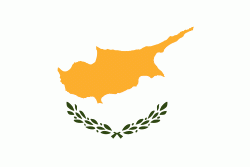Kokkina (Kókkina)
Kokkina (Κόκκινα []; Erenköy or Koççina) is a coastal exclave (pene-exclave) of the de facto Northern Cyprus, and a former Turkish Cypriot enclave in Cyprus. It is surrounded by mountainous territory, with the Morphou Bay on its northern flank. Kokkina sits several kilometres west of mainland Northern Cyprus and is a place with symbolic significance to Cypriots, because of the events of August 1964 (cf. Battle of Tillyria). In 1976, all Kokkina inhabitants were transferred to Gialousa (renamed Yeni Erenköy or "New Erenköy" in Turkish) and the enclave has since functioned as a North Cyprus Defence Force military camp for the Turkish forces.
The Tylliria/Dillirga region, where Kokkina is situated, had been a place of intense confrontation between Greek Cypriot and Turkish Cypriot communities during the inter-communal struggle of 1963–1964. On 4 April 1964, armed groups originating from both communities had fought over a strategic location overlooking the region's only highway. There had also been several sporadic incidents of gunfire between villages of the region. On 8 April 1964, the United Nations Peacekeeping Force in Cyprus (UNFICYP) managed to arrange a ceasefire which was enforced by stationing UNFICYP troops at several critical points.
The government of the Republic of Cyprus viewed Kokkina as a point of insertion for Turkish paramilitaries and weaponry in Cyprus because about 500 Turkish Cypriot volunteers who had been trained and armed in Turkey had landed there. So, on 6 August 1964, elements of the Greek Cypriot National Guard and Hellenic Army units led by General George Grivas attacked the area around Kokkina and surrounded the village forcing its defenders and the civilian population to retreat to a narrow beachhead. The defenders consisted of elements of the Turkish Resistance Organization and a number of the volunteers mentioned above. A heavy artillery barrage (with naval support) of the beachhead followed causing a number of casualties and heavy damage to the village.
The defenders, while completely out-powered and lacking supplies, managed to hold their positions until 8 August when Turkey decided to intervene. The threat of a Turkish military escalation and a resolution of the United Nations Security Council calling for a ceasefire, ended the stand-off. A ceasefire was declared on 9 August 1964 and UNFICYP forces were once again deployed to the area.
Turkey claimed that the aerial attack and threat of further intervention were justified by her right to protect the Turkish Cypriot population under the 1960 Treaty of Guarantee. The village was heavily damaged by the artillery barrage and UN forces declared it a disaster area and brought in much-needed supplies for the civilians.
The Tylliria/Dillirga region, where Kokkina is situated, had been a place of intense confrontation between Greek Cypriot and Turkish Cypriot communities during the inter-communal struggle of 1963–1964. On 4 April 1964, armed groups originating from both communities had fought over a strategic location overlooking the region's only highway. There had also been several sporadic incidents of gunfire between villages of the region. On 8 April 1964, the United Nations Peacekeeping Force in Cyprus (UNFICYP) managed to arrange a ceasefire which was enforced by stationing UNFICYP troops at several critical points.
The government of the Republic of Cyprus viewed Kokkina as a point of insertion for Turkish paramilitaries and weaponry in Cyprus because about 500 Turkish Cypriot volunteers who had been trained and armed in Turkey had landed there. So, on 6 August 1964, elements of the Greek Cypriot National Guard and Hellenic Army units led by General George Grivas attacked the area around Kokkina and surrounded the village forcing its defenders and the civilian population to retreat to a narrow beachhead. The defenders consisted of elements of the Turkish Resistance Organization and a number of the volunteers mentioned above. A heavy artillery barrage (with naval support) of the beachhead followed causing a number of casualties and heavy damage to the village.
The defenders, while completely out-powered and lacking supplies, managed to hold their positions until 8 August when Turkey decided to intervene. The threat of a Turkish military escalation and a resolution of the United Nations Security Council calling for a ceasefire, ended the stand-off. A ceasefire was declared on 9 August 1964 and UNFICYP forces were once again deployed to the area.
Turkey claimed that the aerial attack and threat of further intervention were justified by her right to protect the Turkish Cypriot population under the 1960 Treaty of Guarantee. The village was heavily damaged by the artillery barrage and UN forces declared it a disaster area and brought in much-needed supplies for the civilians.
Map - Kokkina (Kókkina)
Map
Country - Cyprus
 |
 |
| Flag of Cyprus | |
The earliest known human activity on the island dates to around the 10th millennium BC. Archaeological remains include the well-preserved ruins from the Hellenistic period such as Salamis and Kourion, and Cyprus is home to some of the oldest water wells in the world. Cyprus was settled by Mycenaean Greeks in two waves in the 2nd millennium BC. As a strategic location in the Eastern Mediterranean, it was subsequently occupied by several major powers, including the empires of the Assyrians, Egyptians and Persians, from whom the island was seized in 333 BC by Alexander the Great. Subsequent rule by Ptolemaic Egypt, the Classical and Eastern Roman Empire, Arab caliphates for a short period, the French Lusignan dynasty and the Venetians was followed by over three centuries of Ottoman rule between 1571 and 1878 (de jure until 1914).
Currency / Language
| ISO | Currency | Symbol | Significant figures |
|---|---|---|---|
| EUR | Euro | € | 2 |
| ISO | Language |
|---|---|
| EN | English language |
| EL | Greek language |
| TR | Turkish language |















